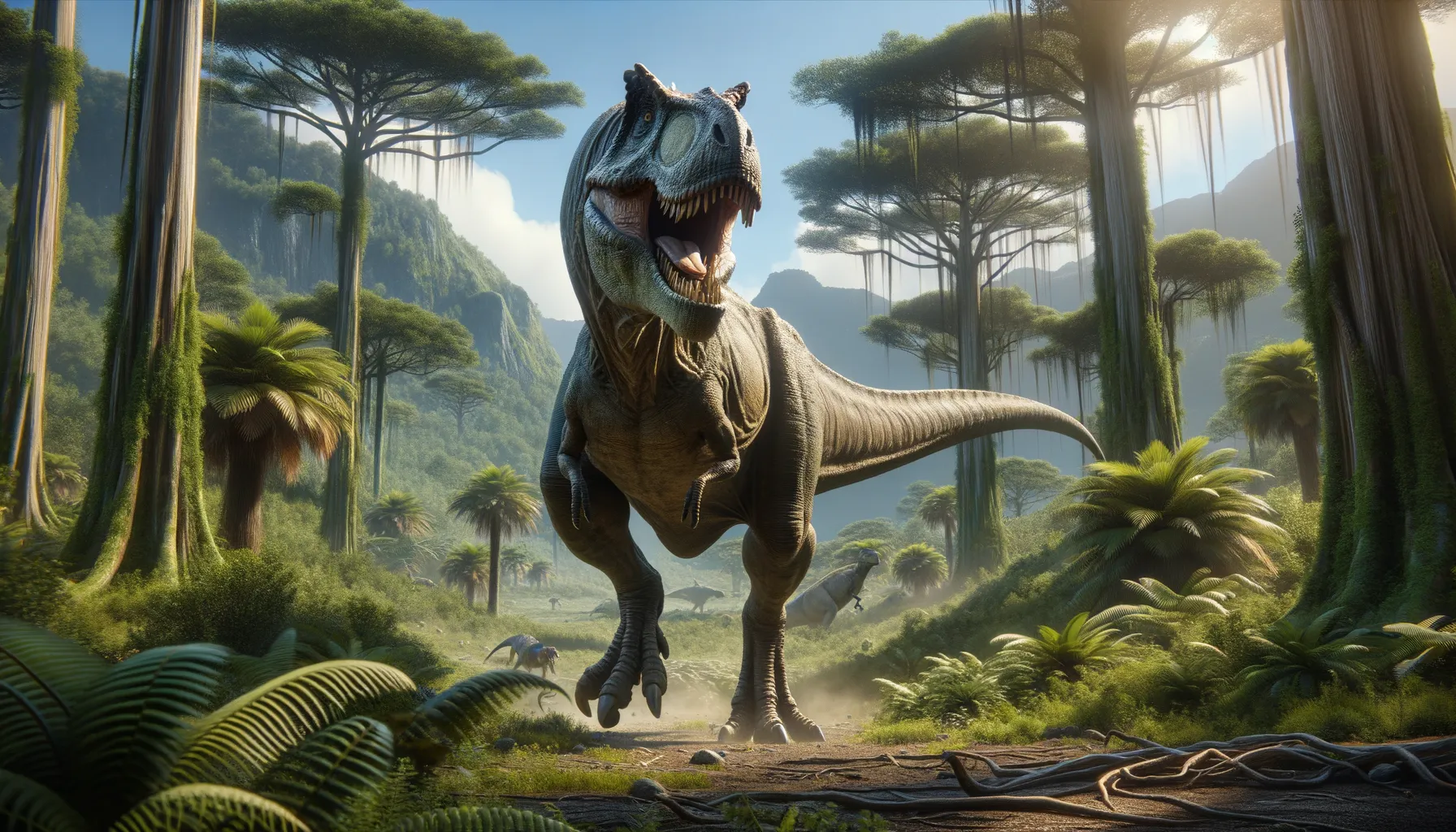
Megalosaurus
The dawn of the dinosaur age.
Period
Jurassic
Length
About 9 meters long.
Height
Around 3 meters at the hips.
Weight
Approximately 1 ton.
Megalosaurus was one of the first dinosaurs to be scientifically described, hailing from the Middle Jurassic period. As a carnivorous theropod, it roamed the landscapes that are now part of modern-day Europe. With its large size and robust build, Megalosaurus played a crucial role in the ecosystem, likely preying on smaller dinosaurs and other animals, showcasing early examples of theropod adaptation.
Diet
Megalosaurus was a carnivore, primarily feeding on other dinosaurs and possibly scavenging when the opportunity arose. Its sharp teeth and strong jaws were well-suited for tearing into flesh.
Hunting
This dinosaur was likely an active predator, using its keen senses to track prey. Megalosaurus may have relied on ambush tactics or short bursts of speed to capture its meals.
Environmental challenges
Megalosaurus lived in a dynamic environment with various climatic changes over time. It had to adapt to different prey availability and potential competition from other predators. Natural disasters like volcanic eruptions could also disrupt its habitat, causing migration or shifts in food sources.
Speed
Likely a moderate runner for its size.
Lifespan
Estimated around 20 to 30 years.
First discovery
Found in England, named by William Buckland in 1824.
Fun Facts
- Megalosaurus was the first dinosaur species to be formally named and described, way back in 1824.
- Unlike many other dinosaurs, Megalosaurus fossils have been found right in the heart of England, particularly in the Oxfordshire region.
- This dinosaur roamed the Earth during the Middle Jurassic Period, about 166 million years ago.
- Megalosaurus was a carnivorous dinosaur, meaning it was a meat-eater, likely preying on smaller dinosaurs and other animals.
- Its name means 'Great Lizard' in Latin, reflecting the initial impression scientists had of its gigantic size.
- The famous paleontologist William Buckland was responsible for discovering the first Megalosaurus bones.
- Early depictions of Megalosaurus imagined it as a bulky, almost dragon-like creature, quite different from what modern science reveals.
Growth and Development
Like many dinosaurs, Megalosaurus hatched from eggs laid in clutches, and young grew rapidly to avoid predation. As they matured, their bones strengthened and muscles developed, allowing them to hunt effectively. Some may have experienced growth spurts depending on food availability.
Habitat
Megalosaurus inhabited lush, semi-tropical landscapes with forests and open plains. This environment provided ample hunting grounds and diverse prey species. Seasonal changes would have affected water sources and vegetation, requiring adaptability in lifestyle.
Interaction with other species
Megalosaurus likely encountered various herbivorous dinosaurs, serving as potential prey. It also faced competition from other carnivores, potentially leading to territorial disputes. Scavenging opportunities meant contact with smaller predators or opportunistic feeders.
Natural lifespan
In the wild, Megalosaurus had a lifespan potentially reaching 30 years.
Reproduction
Reproduction involved laying eggs in well-concealed nests to ensure safety. Parental care post-hatching is not well-documented, though it's possible young stayed in groups for protection. Courtship behaviors could have included vocalizations or displays.
Social behaviour
Evidence suggests Megalosaurus might have been solitary or lived in loose groups. Social interactions could have included dominance displays and territory defense. Vocal and visual communication would have been key in these interactions.
Fossil locations
Fossils of Megalosaurus have primarily been found in England, particularly in the Oxfordshire area. These discoveries have provided key insights into its anatomy and behaviors. Ongoing excavations continue to uncover new specimens, enhancing our understanding of this early theropod.
